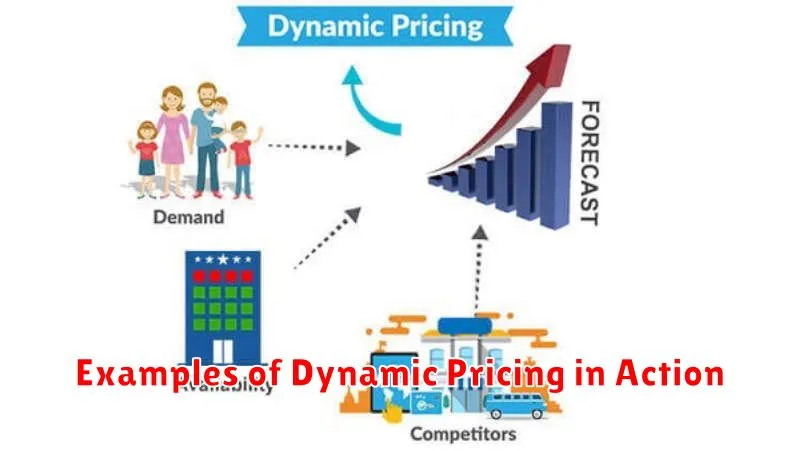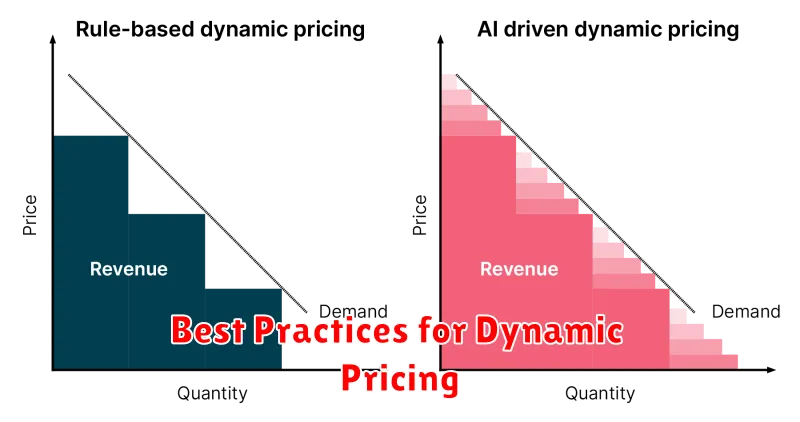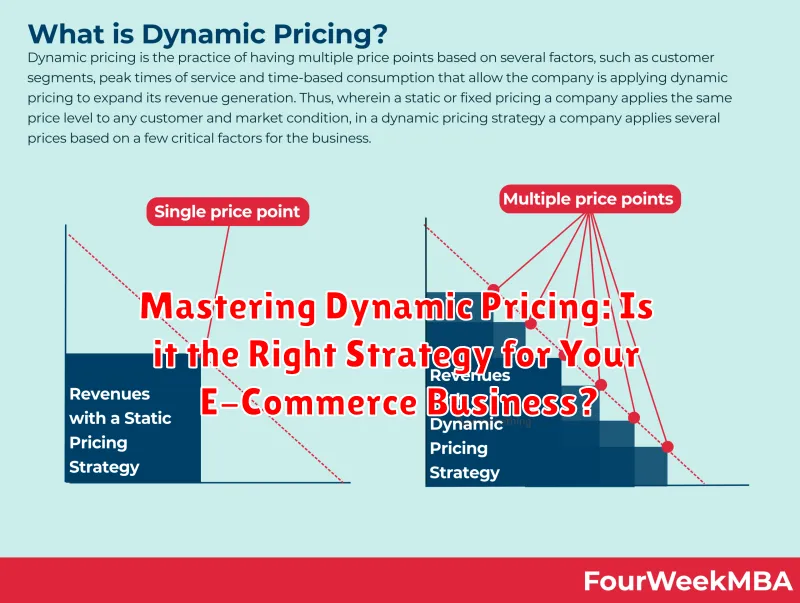In today’s fiercely competitive e-commerce landscape, businesses are constantly seeking innovative strategies to maximize revenue and profitability. Dynamic pricing has emerged as a powerful tool, enabling businesses to adjust prices in real-time based on market demand, competitor pricing, and various other factors. This approach offers the potential to significantly boost sales and optimize profits, but implementing it effectively requires careful consideration and strategic planning. This article delves into the complexities of dynamic pricing, examining its benefits, challenges, and crucial considerations for determining if it’s the right strategy for your e-commerce business.
Is dynamic pricing the key to unlocking your e-commerce potential? This article explores the core mechanics of dynamic pricing strategies, providing you with a comprehensive understanding of how it works and its potential impact on your business. We’ll analyze the factors influencing price fluctuations, such as competitor behavior, inventory levels, and consumer demand. Furthermore, we’ll discuss the essential prerequisites for successful dynamic pricing implementation, including robust data analytics capabilities and a flexible pricing infrastructure. By the end of this article, you will be equipped to assess whether dynamic pricing aligns with your business objectives and whether it can truly drive growth in your e-commerce venture.
Introduction to Dynamic Pricing
In today’s ever-evolving e-commerce landscape, businesses are constantly seeking ways to optimize their pricing strategies and maximize revenue. Dynamic pricing has emerged as a powerful tool to achieve this. It’s a pricing strategy where businesses set flexible prices for products or services based on market demands, competition, and other external factors. Unlike static pricing, where prices remain constant, dynamic pricing allows for real-time adjustments, ensuring businesses can react swiftly to market changes.
Dynamic pricing differs from simply having sales or promotions. While promotions are typically planned marketing activities, dynamic pricing uses automated algorithms to adjust prices based on pre-defined rules and real-time data analysis. This allows for greater agility and responsiveness to market fluctuations.
This approach offers businesses the potential to increase revenue, improve competitiveness, and optimize inventory management. However, implementing dynamic pricing requires careful consideration and a deep understanding of its implications. It’s crucial to understand the intricacies of how dynamic pricing works, its potential benefits and drawbacks, and whether it aligns with your overall business goals and brand image.
How Dynamic Pricing Works
Dynamic pricing, also known as surge pricing or time-based pricing, uses algorithms to adjust prices in real-time based on a variety of factors. These algorithms consider supply and demand fluctuations, competitor pricing, market trends, and even external factors like weather or time of day.
Typically, a dynamic pricing engine integrates with your e-commerce platform and analyzes data from various sources. This data informs the algorithm, which then automatically updates prices within predefined parameters you set. These parameters act as guardrails, preventing prices from becoming too high or too low, thus maintaining profitability and brand image.
For example, if demand for a particular product suddenly increases due to a trending social media post, the algorithm can automatically increase the price to capitalize on this heightened interest. Conversely, if demand drops, the price can be lowered to stimulate sales and clear inventory. The entire process is automated, allowing for rapid adjustments to market changes.
Benefits of Dynamic Pricing
Dynamic pricing, when implemented effectively, offers several key advantages for e-commerce businesses. It allows for optimized pricing in response to real-time market conditions. This can lead to increased revenue and profitability.
Improved competitiveness is another significant benefit. By adjusting prices based on competitor pricing and demand fluctuations, businesses can maintain a competitive edge and attract price-sensitive customers. This can be particularly beneficial in highly competitive markets.
Dynamic pricing also enables businesses to better manage inventory levels. By increasing prices for products in low stock, demand can be tempered. Conversely, lowering prices on overstocked items can stimulate sales and prevent inventory stagnation. This leads to more efficient inventory management and reduced holding costs.
Finally, dynamic pricing provides valuable data-driven insights. By tracking price changes and their impact on sales, businesses gain a better understanding of customer behavior and price sensitivity. This knowledge can inform future pricing strategies and marketing decisions.
Drawbacks of Dynamic Pricing
While dynamic pricing offers several advantages, it also presents potential drawbacks that businesses must carefully consider.
Customer alienation is a significant concern. Frequent price fluctuations can erode customer trust and loyalty, particularly if perceived as unfair or manipulative. Price changes that seem arbitrary or solely profit-driven can lead to negative brand perception.
Complexity in implementation and management is another drawback. Dynamic pricing requires sophisticated software and analytical tools to monitor market conditions, competitor pricing, and internal costs in real-time. Maintaining this system requires ongoing investment and expertise.
The potential for price wars is also a risk. If competitors adopt similar dynamic pricing strategies, it can lead to a race to the bottom, diminishing profit margins for all involved.
Finally, legal and ethical considerations must be addressed. In some industries, dynamic pricing practices can raise concerns about price gouging or discriminatory pricing, potentially leading to legal challenges.
Examples of Dynamic Pricing in Action

Let’s explore some real-world examples of dynamic pricing across different industries:
Airline Tickets
Airlines are well-known for using dynamic pricing. A flight from New York to Los Angeles might be priced higher during peak travel seasons like holidays or summer, and lower during the off-season or for mid-week flights. The same seat can fluctuate significantly in price based on demand, time of purchase, and remaining availability.
Ride-Sharing Services
Companies like Uber and Lyft utilize dynamic pricing, often referred to as “surge pricing.” During periods of high demand, such as rush hour, bad weather, or special events, prices automatically increase to incentivize more drivers to come online and meet the demand. Prices then decrease as demand subsides.
E-commerce Retail
Online retailers commonly adjust prices based on various factors, including competitor pricing, time of day, and even user browsing history. A product’s price might decrease during a flash sale or increase if inventory is running low. This real-time price adjustment is a core component of dynamic pricing strategies.
When to Use Dynamic Pricing (and When Not To)
Dynamic pricing can be a powerful tool, but it’s not suitable for every business. Understanding the optimal scenarios for implementation is crucial.
When to Use Dynamic Pricing:
Consider dynamic pricing when you have:
- Large product catalogs: Managing prices manually across numerous items becomes cumbersome. Dynamic pricing automates this process.
- Fluctuating demand: If demand for your products varies significantly (e.g., seasonal items), dynamic pricing helps capitalize on peak periods.
- Competitive markets: In highly competitive landscapes, dynamic pricing allows you to react quickly to competitor price changes.
- Clear pricing goals: Whether maximizing revenue or market share, well-defined objectives are essential for effective dynamic pricing.
When Not to Use Dynamic Pricing:
Avoid dynamic pricing if you:
- Sell unique or highly specialized products: Price may be less of a factor for exclusive items.
- Prioritize customer loyalty and brand image: Frequent price fluctuations can erode trust and be perceived negatively.
- Lack the resources for implementation and monitoring: Dynamic pricing requires robust software and ongoing analysis.
- Operate in a market with price transparency issues: Dynamic pricing can exacerbate customer concerns if perceived as unfair or manipulative.
Implementing Dynamic Pricing in Your Business
Implementing dynamic pricing requires a strategic approach. Start by identifying your pricing objectives. Are you aiming to maximize revenue, increase market share, or perhaps clear out excess inventory? Different objectives will necessitate different pricing strategies.
Next, select the right dynamic pricing software. Consider factors such as your e-commerce platform compatibility, the level of automation you need, and the complexity of your pricing rules. Some software options offer basic rule-based pricing, while others utilize advanced algorithms powered by machine learning.
Integrate the chosen software with your existing systems, including your inventory management and e-commerce platform. This ensures seamless data flow and accurate price adjustments.
Begin by testing your dynamic pricing strategy on a small scale. This allows you to monitor the impact on sales and customer behavior before a full rollout. Careful monitoring and analysis are crucial. Track key metrics like conversion rates, average order value, and profit margins to ensure the strategy is effective.
Best Practices for Dynamic Pricing

Establish clear objectives. Before implementing dynamic pricing, define what you aim to achieve. Is it maximizing revenue, increasing market share, or improving profitability? Having well-defined goals will guide your strategy.
Segment your audience. Different customer segments have varying price sensitivities. Segmenting your audience allows for tailored pricing adjustments based on factors like demographics, purchase history, and loyalty.
Monitor competitor pricing. Stay informed about your competitors’ pricing strategies to ensure your pricing remains competitive within the market landscape. However, avoid solely reacting to competitors; focus on your own business objectives.
Set price floors and ceilings. Establish acceptable price ranges to safeguard profit margins and prevent extreme price fluctuations that could damage your brand perception. These boundaries act as a safety net within your dynamic pricing model.
Test and iterate. Dynamic pricing isn’t a one-size-fits-all solution. Continuously monitor results, A/B test different strategies, and refine your approach based on data analysis to optimize performance over time.
Measuring the Success of Dynamic Pricing Strategies
Effectively measuring the impact of dynamic pricing is crucial. Tracking the right Key Performance Indicators (KPIs) will demonstrate whether your strategy is achieving its objectives.
Sales Revenue: Monitor overall sales revenue changes after implementing dynamic pricing. Compare this data to previous periods to understand the direct impact on your bottom line.
Profit Margins: Analyze how dynamic pricing affects your profit margins. Are you achieving higher profits per unit sold? Track changes in both gross and net profit margins.
Conversion Rates: Observe any shifts in conversion rates. Is dynamic pricing encouraging more customers to complete purchases, or is it having the opposite effect?
Competitor Pricing: Continuously monitor your competitors’ pricing strategies to ensure your dynamic pricing keeps you competitive within the market.
By carefully tracking these KPIs, you can make data-driven adjustments to your dynamic pricing strategy and maximize its effectiveness.

